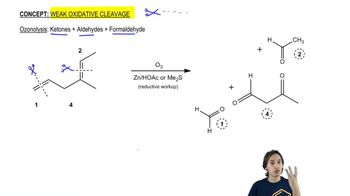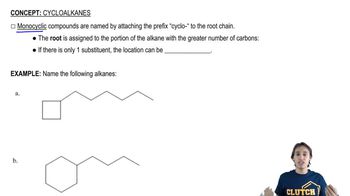Textbook Question
Ozonolysis of an alkene, followed by treatment with dimethyl sulfide, forms the following product(s). Identify the alkene in each case.
a.

 Verified step by step guidance
Verified step by step guidance Verified video answer for a similar problem:
Verified video answer for a similar problem:



 6:30m
6:30mMaster General properties of ozonolysis. with a bite sized video explanation from Johnny
Start learning